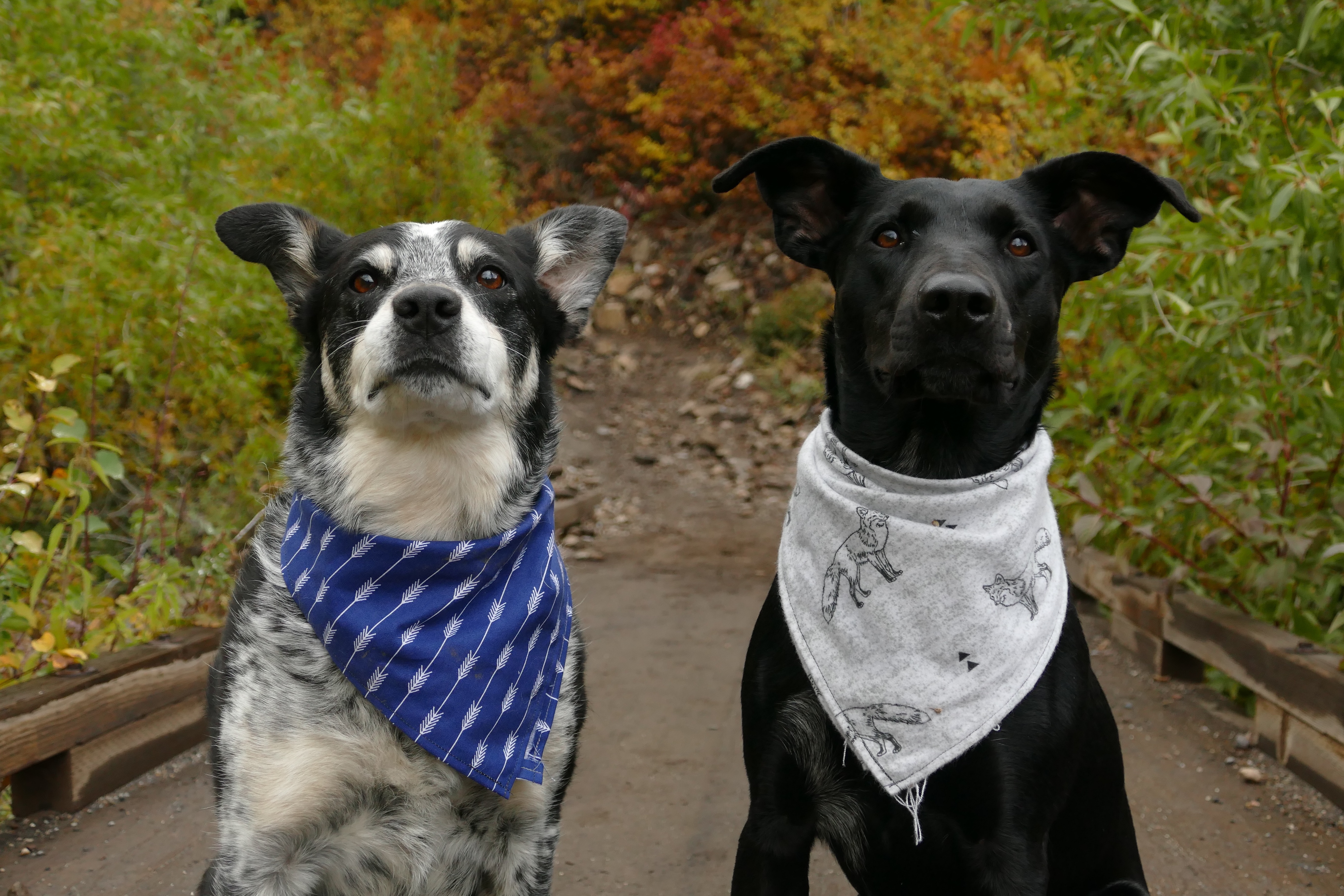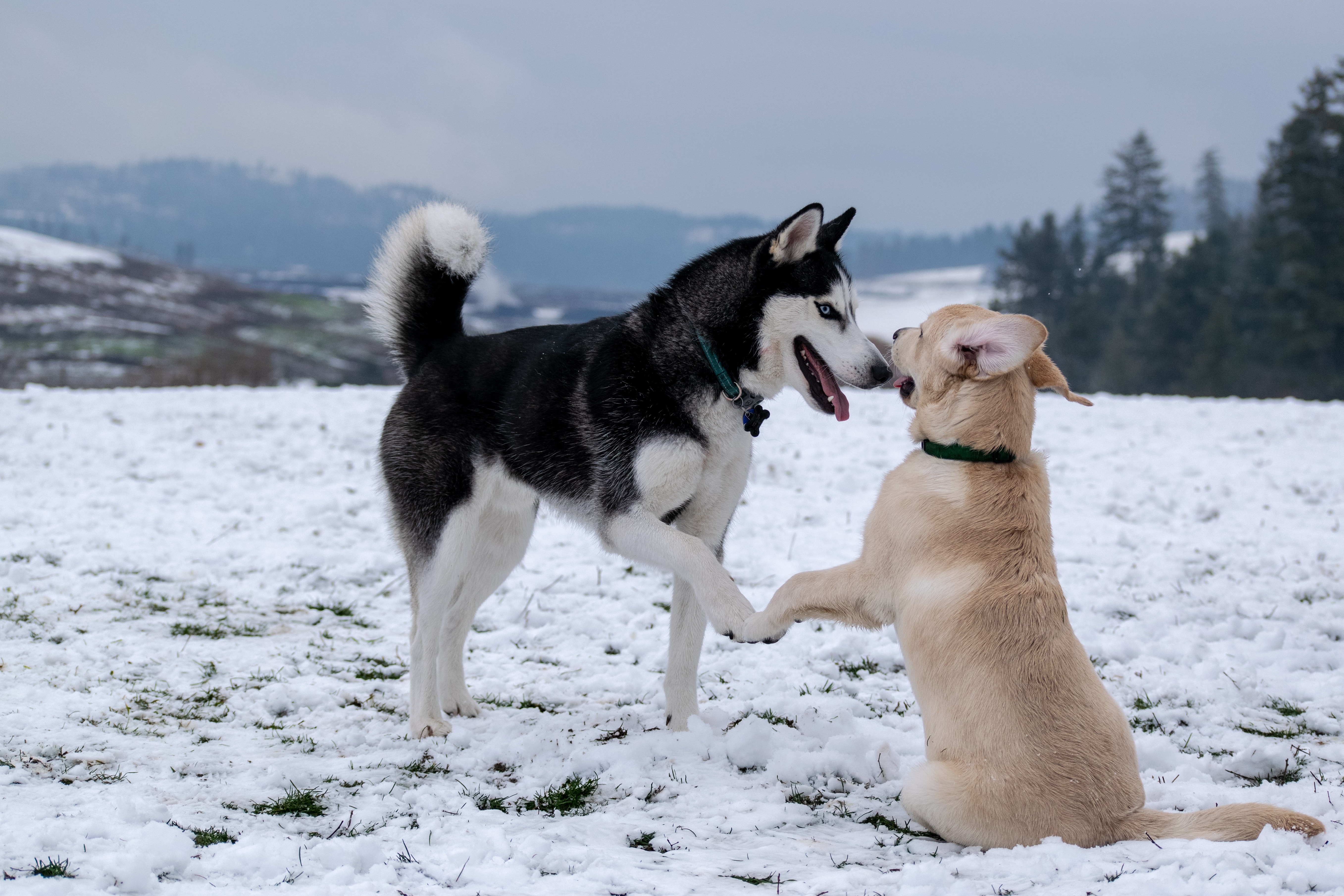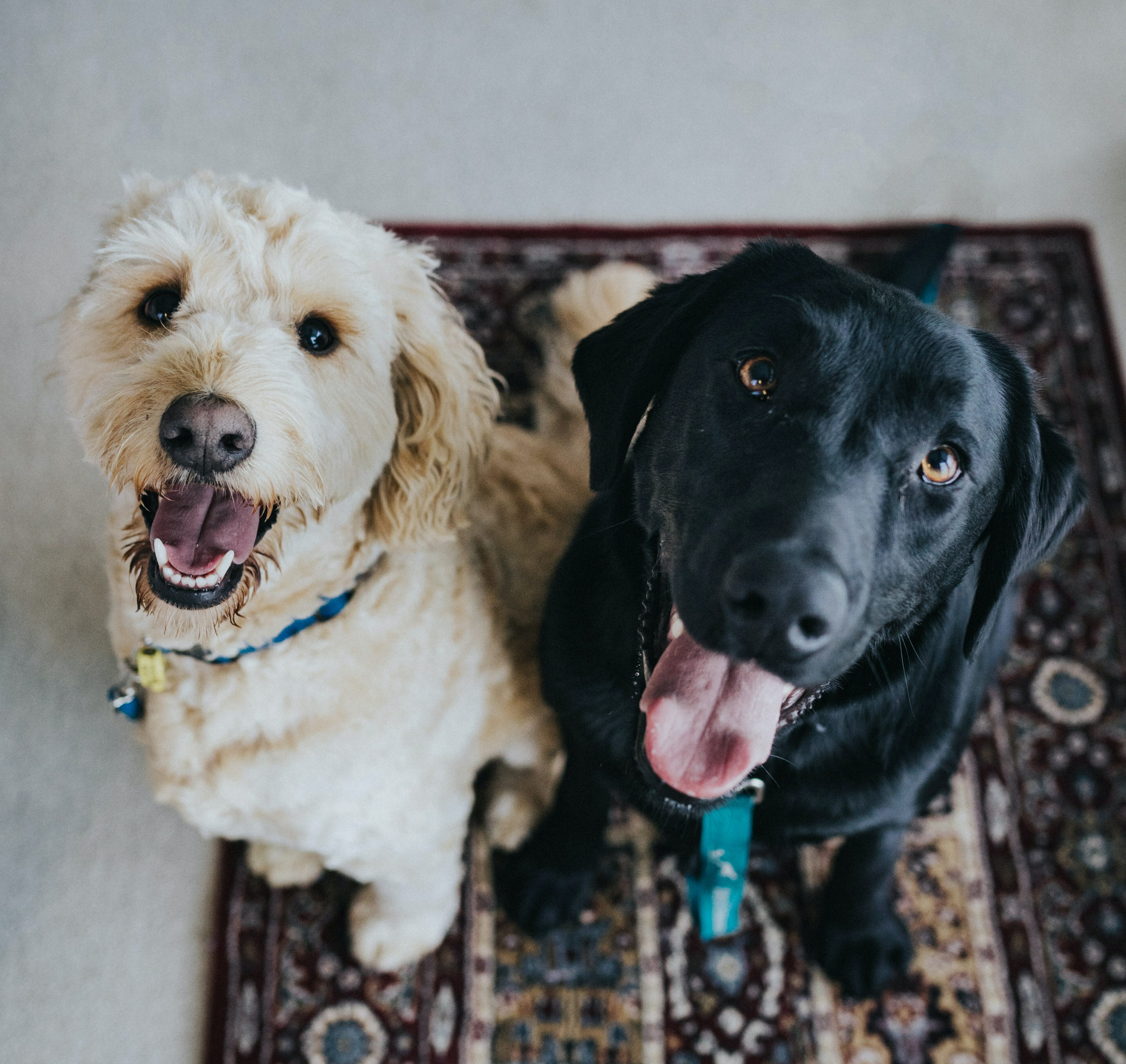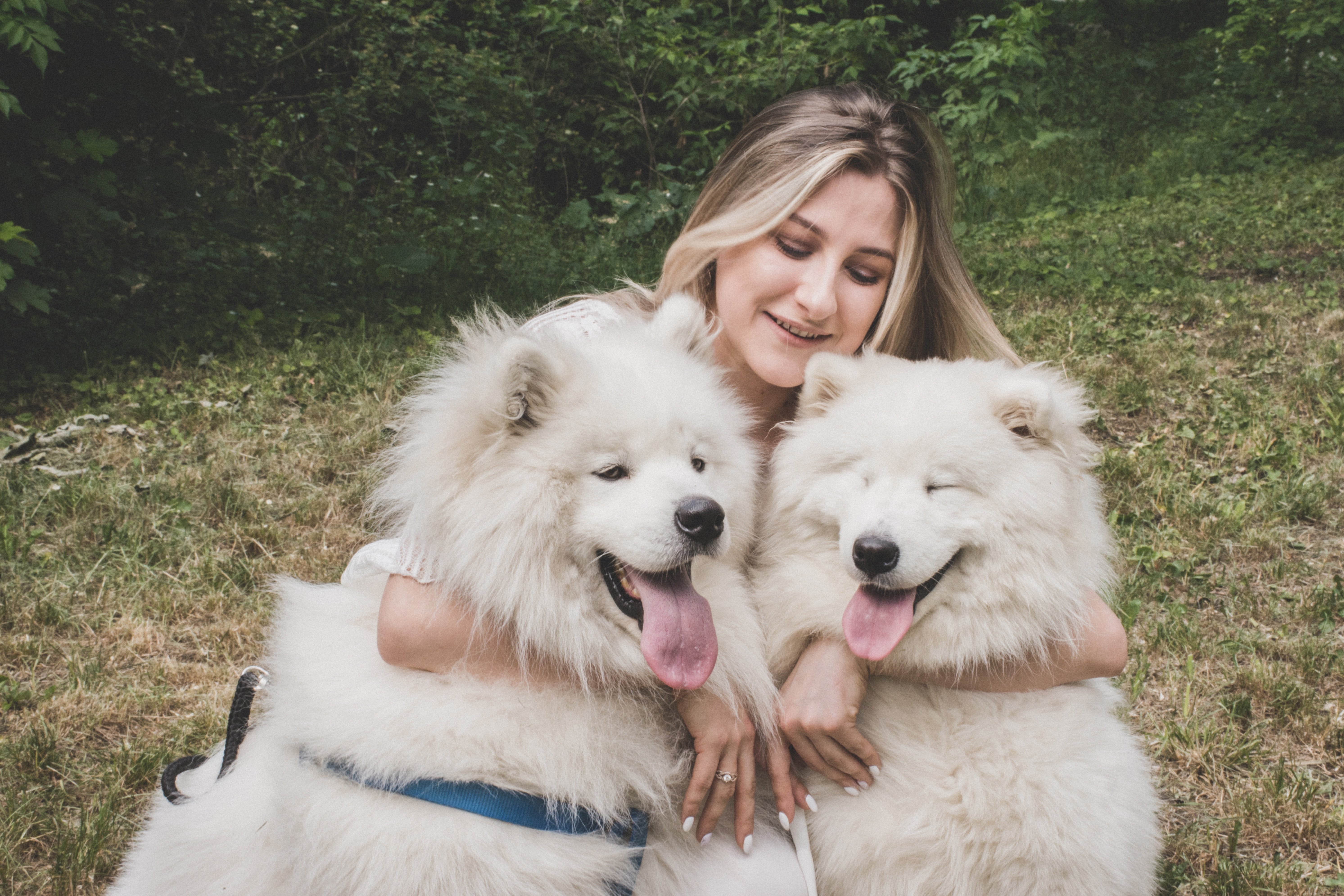Bringing a new dog into your home can be an exciting yet delicate process, especially when you already have an existing dog. The key to success lies in being thoughtful when introducing dogs and having a strategic approach to fostering positive interactions. Here are ten tips for introducing dogs to ensure a smooth transition and help your two dogs become the best pals.
- Create separate spaces for each dog to adjust to each other's scent & presence.
- Introduce dogs on leash in a neutral area to ensure controlled interactions.
- Monitor body language for signs of play or tension and intervene if needed.
- Teach both dogs obedience commands for easier control during interaction.
- Feed dogs separately to prevent resource guarding and address any issues early.
The information provided herein is for informational purposes only. Please refer to our disclaimer for more details..
- 1) Separate the New Dog and the Current Dog
- 2) Keep the Dogs on the Leash when Introducing Dogs
- 3) Allow the Dogs to Investigate Each Other
- 4) Supervise the Body Posture When Introducing a New Dog
- 5) Use Basic Obedience Commands
- 6) Use Different Rooms When Bringing a New Dog To Your Home
- 7) Address Resource Guarding
- 8) Offer One-on-One Time
- 9) Create Positive Associations
- 10) Give Both Dogs Properly Space
- Solo or Social: Does Your Dog Need a Friend?
1) Separate the New Dog and the Current Dog
Image credits: Yuki Dog
Before introducing another dog to your current canine companion or bringing a new dog home, allow them some time apart within the confines of the same house. This helps reduce initial excitement or tension and allows your new dog to acclimate to their new home.
Tip: Create a designated space for each dog, complete with their bed, toys, and water bowls. Doing this will allow your new dog to explore its territory without encountering your current dog. Both dogs can smell and hear each other, allowing them to get used to each other’s presence slowly.
Example: You can place the new dog in a separate room with the door closed for the first few hours, allowing the resident dog to familiarize themselves with the new scent.
2) Keep the Dogs on the Leash when Introducing Dogs
Keep both dogs on a leash when it’s time for the first meeting. This precautionary measure ensures you can control their movements, preventing possible conflicts. The old story of alpha dogs isn’t true, but you might still need to help the dogs to get along.
Tip: It is a good idea to get a helper, if possible, so each dog has someone guiding them. Being two people will make it easier to manage their interactions and ensure a controlled environment.
Example: Take the dogs for a short, parallel walk together, allowing them to get accustomed to each other’s presence without direct contact.
3) Allow the Dogs to Investigate Each Other
Image credits: Karl Anderson
In a neutral territory, let the dogs approach and sniff each other. This initial interaction helps them exchange scents and begin the process of getting acquainted. Be sure to keep an eye out for tension between the dogs.
Tip: Choose a neutral space like a park or a friend’s backyard for the first meeting. This prevents territorial behaviours and will reduce the chance of confrontations.
Example: Allow the dogs to interact on the lead. Once the dogs have greeted each other on the leash, you can let them go. Allow the dogs to move freely, dragging their leashes while closely monitoring their body posture. Positive signs include wagging tails and relaxed postures. Dogs are social animals, but not everyone will immediately accept an invitation to be friends.
4) Supervise the Body Posture When Introducing a New Dog
Always supervise the dogs’ interactions, primarily while the dogs are getting used to each other. Be prepared to intervene if any signs of aggression or tension arise.
Tip: Learn to distinguish between play and aggression. Playful behaviours include play bowing, loose body movements, and reciprocal engagement. Tension is often displayed as staring, snarling, or even snapping.
Example: If one dog growls or exhibits dominant postures, like standing very stiffly, calmly separate them and redirect their attention to a positive activity. If you are unsure whether you can read how the dogs interact correctly, you can always ask for help from other dog owners or even a professional.
5) Use Basic Obedience Commands
Image credits: Jay Wennington
Ensure that both dogs are familiar with basic obedience commands like sit, stay, come, and leave it. This will make it easier for you to properly control a situation and both dogs.
Tip: Prioritize basic obedience training before introducing the new dog to your home.
Example: Practice commands individually with each dog, rewarding them for compliance. This establishes a positive association with obedience and trust between you and them. One of the ways to build a good connection with your new doggy is through training.
6) Use Different Rooms When Bringing a New Dog To Your Home
When the dogs have met each other outside, it will be time to bring them home. If your home allows, consider introducing the dogs in different rooms before letting them interact freely inside. This controlled introduction can prevent overwhelming initial meetings inside.
Tip: Utilize baby gates or a see-through fence to create a barrier between the dogs. Allow them to see and smell each other without direct contact, especially as the new dog takes time to get used to the new home.
Example: After initial separation, if the dogs seem relaxed, bring them into shared spaces one at a time, gradually increasing their exposure to each other.
7) Address Resource Guarding
Image credits: C Perret
Dogs may display resource-guarding behaviours, especially with items like toys, food, or food bowls. Be attentive to these behaviours and take steps to address them early on.
Tip: Initially, feed the dogs in separate areas to prevent competition over food. Gradually bring them closer during mealtimes as they become more comfortable. Never automatically expect dogs to share resources, whether it is food, raw bones, or when they want to play with the same toys.
Example: If resource guarding occurs, we recommend you consult with a professional dog trainer to implement positive reinforcement techniques and modify this behaviour to help your canine friend.
8) Offer One-on-One Time
While it’s crucial to allow them to interact, providing individual attention for each dog you alone is equally important. Spend quality one-on-one time with each dog to strengthen your bond with both. If both dogs trust you, they are more likely to trust your judgement.
Tip: Rotate one-on-one time to ensure each dog receives equal attention.
Example: Engage in activities that each dog enjoys, whether it’s playing fetch, going for a long walk, or simply cuddling on the couch. If your dog is outgoing, you can also take it out to meet other dogs with you to ensure it stays comfortable meeting other dogs without its dog pack.
9) Create Positive Associations
Image credits: Valerie Elash
Associate positive experiences with both dogs properly by offering treats, praise, and affection when the dogs are calm and friendly towards one another. Remember that it is also great if the dogs just ignore each other – especially in the beginning. Don’t expect social-media-friendly scenes or love at first bark.
Tip: Use high-value treats during interactions to create positive associations, especially when they react in a positive way.
Example: When the dogs are near each other and displaying positive body language, reward them with treats and verbal praise.
10) Give Both Dogs Properly Space
Respect the need for alone time. Dogs, like humans, may occasionally need their space. Allow them to have some downtime when they are left alone, especially during the initial days. Never make your dog interact if it does not want to.
Tip: Provide separate resting areas for each dog, ensuring they have their own comfortable space to retreat when needed.
Example: If one dog seeks solitude, avoid unnecessary interruptions. This promotes a sense of security and autonomy for both dogs.
Whether adding a new puppy to the family or bringing in a second dog, these tips will make the transition smoother for everyone involved. Understanding canine body language and fostering positive interactions can help lay the foundation for a strong and loving bond between your furry companions.
Solo or Social: Does Your Dog Need a Friend?
Now, we’ve supplied you with plenty of suggestions for introducing two dogs to each other. But that might beg the question: Should you do it?
Contrary to common beliefs, dogs are not one-size-fits-all in their social preferences. While some breeds thrive in the company of other canines, not every dog goes out of their way to be friends with everyone.
It’s essential to recognize that each dog has unique needs and preferences. Some dogs are social butterflies, flourishing in the camaraderie of fellow canines. On the flip side, many dogs relish their independence, especially certain terrier breeds and some independent breeds.
In essence, the key to a happy canine companion lies in understanding and catering to their individual needs, whether that involves canine camaraderie or the pleasures of a solo existence.
Disagree with number 1 on the list. I have found the best way to introduce new dogs to each other is not in the confines of the first dog's house but in a neutral area away from the house. A park is a great place. Then the first dog doesn't feel like the second dog is invading its territory. Meet on neutral ground first and then bringing home second dog is a breeze.
Disagree with number 1 on the list. I have found the best way to introduce new dogs to each other is not in the confines of the first dog's house but in a neutral area away from the house. A park is a great place. Then the first dog doesn't feel like the second dog is invading its territory. Meet on neutral ground first and then bringing home second dog is a breeze.









2
1